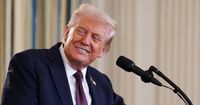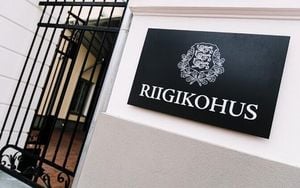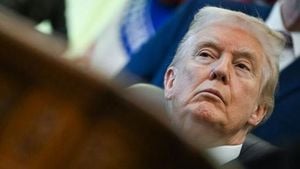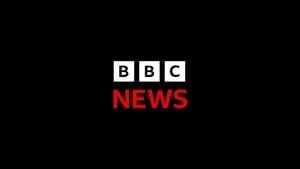It was a meeting that was supposed to be about averting a government shutdown, but in classic fashion, President Donald Trump turned it into a spectacle. On Monday, September 29, 2025, Trump convened the four top Congressional leaders in the Oval Office. There, nestled prominently on the Resolute Desk, were two bright red “Trump 2028” hats—an unmistakable nod to his ongoing flirtation with the idea of a constitutionally prohibited third presidential term. The moment, immortalized in photographs Trump quickly posted to his Truth Social account, set off a fresh round of speculation, mockery, and political theater in Washington.
According to Nexstar Media Inc., House Minority Leader Hakeem Jeffries (D-N.Y.) described the scene as surreal. “They just randomly appeared in the middle of the meeting on the desk. It was the strangest thing ever,” Jeffries told CNN. He recounted looking at the hat, then at Vice President JD Vance—seated to his left—and quipping, “Don’t you got a problem with this?” to which Vance replied, “No comment.” And that, said Jeffries, was the end of it. Trump, for his part, did not attempt to hand out the hats; they simply sat there, serving as silent provocations.
But the hats were just the tip of the iceberg. As the clock ticked down to the shutdown deadline, Trump’s social media onslaught reached new heights. According to BBC, he posted an AI-generated video that depicted Senate Minority Leader Chuck Schumer using vulgar language, while Jeffries, who is Black, appeared in a digitally altered sombrero and bushy mustache, mariachi music blaring in the background. The intent was clear: mockery, provocation, and, perhaps most importantly, keeping the spotlight squarely on Trump as the shutdown loomed.
Vice President JD Vance, who has largely avoided public friction with Trump, defended the memes and denied any racial intent. Speaking to reporters at the White House, Vance said, “I honestly don’t even know what that means. Like is he a Mexican American that is offended by having a sombrero meme? The American people recognize that he did not actually come to the White House wearing a sombrero and a black curly animation mustache. Like, give the country a little bit of credit.” Vance insisted that one could “negotiate in good faith while also poking a little bit of fun,” and even offered a deal: “I’ll tell Hakeem Jeffries right now, I make the solemn promise to you that if you help us reopen the government, the sombrero memes will stop.”
The trolling extended beyond social media. The White House briefing room played footage of Democrats opposing previous shutdowns on a loop, amplifying the administration’s message that blame for the current crisis should fall squarely on the opposition. But if the strategy was to force Democrats’ hand, it was a risky one. A Siena/New York Times poll conducted from September 22 to 27, 2025, found Americans divided on who to blame: 19 percent pointed to Democrats in Congress, 26 percent to Trump and Republicans, and 33 percent blamed both sides equally. Another 21 percent said they hadn’t heard enough to say. In a deeply polarized nation, the meme war may sway some, but many remain unmoved.
Trump’s penchant for spectacle is nothing new, but the stakes this time were particularly high. The government shutdown threatened to furlough hundreds of thousands of workers and disrupt services nationwide. Yet, as The Hill and BBC reported, Trump seemed less interested in dealmaking than in dominating the news cycle. He threatened mass layoffs, declaring, “We can get rid of a lot of things that we didn’t want. They’d be Democrat things.” The message was clear: the shutdown was not just a budgetary impasse, but a political weapon.
Meanwhile, the question of Trump’s own political future hovered over the proceedings. The “Trump 2028” hats were more than just a joke—they were a signal. Trump has repeatedly refused to rule out an attempt at a third term, despite the clear prohibition of the Twenty-Second Amendment. His allies insist he is merely trolling, but as Nexstar Media Inc. and BBC note, Trump has at times appeared more serious. In August, he told reporters he would “probably not” seek a third term, but added with a laugh that he’d like to. He also declined to endorse a successor for the 2028 Republican nomination, though he did acknowledge Vice President JD Vance as the “most likely” heir apparent and suggested Secretary of State Marco Rubio could be a formidable running mate.
For Vance, the hats and memes are just part of the job. Pressed in August on whether he sees himself as the heir to the MAGA movement, Vance demurred, telling NBC’s “Meet the Press,” “No. I see myself as a vice president who’s trying to do a good job for the American people.” Still, Trump’s fundraising efforts have kicked 5 percent of donations to Vance’s PAC, a sign that the vice president is at least financially aligned with the president’s ambitions.
Democrats, for their part, seemed caught off guard by the spectacle. Jeffries and Schumer left the Oval Office meeting with nothing to show for it—no progress on the shutdown, no meaningful negotiations, and a fresh round of social media mockery. California Governor Gavin Newsom tried to fight fire with fire, issuing a statement in Trump’s own abrasive, all-caps style: “TRUMP ALWAYS CHICKENS OUT (T.A.C.O.). NO SOMBRERO NEEDED!” Some Democrats, like former Jill Biden spokesman Michael LaRosa, even urged their party to lighten up, suggesting that failing to laugh at the hat stunt “epitomizes the problem with the Democratic Party these days.”
Yet, beneath the surface, the episode revealed deeper anxieties. Trump’s refusal to rule out a third term, his willingness to use government shutdowns as leverage, and his relentless focus on optics over substance have left both parties in a state of uncertainty. For Republicans hoping to emerge as the party’s next standard-bearer, the message was clear: Don’t upstage Trump, and don’t expect him to fade quietly into the background.
As the government shutdown grinds on and the meme wars rage, one thing is certain: in Trump’s Washington, nothing is ever quite as it seems. The hats on the desk, the AI-generated videos, the trolling tweets—all are part of a larger strategy to keep the spotlight fixed firmly on the president, no matter the cost to the country or his rivals.
For now, the nation waits to see who will blink first—and whether the spectacle will give way to real solutions, or simply set the stage for even more dramatic showdowns to come.




